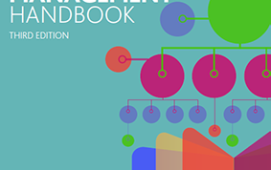
With now less than ten months to go until the proposed live date for the transition to T+1 settlement in North America, most firms are deeply embedded in projects that will enable them to achieve that deadline, with major firms beginning their first phase of testing this month (August). However, multiple challenges still exist.
In this Q&A, we talk to John Bevil, Senior Product Manager at Xceptor, a global data ingestion, automation and transformation software provider, about some of the areas that technology is helping firms to achieve their T+1 targets.
TTI: How can automation technology help firms transition to T+1 settlement?
JB: We view T+1 as spanning across three key pillars: people, processes, and technology. Xceptor covers all these areas, resolving a wide range of issues faced by the industry as it moves to T+1 settlement. We have been involved in post-trade efficiency for a long time, and T+1 ties into that narrative.
Firms with personnel located further east face significant challenges with T+1 due to shorter timescales for rectifying breaks, and suboptimal processes occurring via emails and spreadsheets. Xceptor plays a vital role in automating these processes, highlighting the correlation between the people, their tasks, and their working environments, and the processes which are currently designed for T+2 settlement. However, these personnel will need to operate predominantly in a T+0 environment to execute these processes for T+1 settlement. Xceptor provides the technology to make this possible.
The human element involves individuals working with Xceptor and understanding the user-friendly capabilities it offers. In the past, we described ourselves as a no-code, low-code platform, but we have moved away from this terminology. However, it does essentially allow users to design the most efficient process to address their business problems. As for processes and data challenges, introducing Xceptor enables systems designed for T+2 settlement to transition to a T+1 environment, as we can manipulate, capture, and transform data into a form that’s ready for business. For instance, allocations sent via spreadsheets or emails can now be transformed into useful business logic using Xceptor.
TTI: What are some of the key T+1 challenges, and how does automation and transformation technology help address those challenges?
JB: The most significant challenges around T+1 are speed, efficiency, and accuracy. Speed is crucial when 24 hours are removed from the settlement cycle. However, improving data accuracy is also important to prevent errors in the flow, as the time to correct any issues becomes significantly shorter. Xceptor plays two roles here: bringing data into the lifecycle initially, and improving data quality, thereby considerably reducing remediation steps.
Xceptor offers an end-to-end solution, ingesting data, transforming it into business-ready data, validating it to ensure it’s suitable for the business rules related to a particular process, applying the internally designed workflow to optimise the process, and finally handing it off to the required platform, system, or exchange in the suitable format.
We also focus on the automated reconciliation space. Xceptor is not one of the large monolithic reconciliation systems. Our strength lies in middle-office operations, where we consume data from front-end and back-end systems and reconcile different touchpoints. The challenge with reconciliations during T+1 is accessing the data. Relying on overnight batches isn’t feasible under a T+1 environment, so we’re encouraging a shift in mindset towards mini batches, real-time reconciliations, or reconciliation on demand.
TTI: Where do you see the industry heading beyond T+1? Are we moving towards T+0 and atomic settlement? What trends or changes do you predict?
JB: In a recent client forum, we discussed that many processes need to be executed on T+0 in order to achieve T+1 settlement. Larger players will likely not find the transition to T+0 too challenging, so we believe that T+1 is certainly achievable for most of the ecosystem, although some firms, particularly those on the buy side, are lagging behind.
As for atomic settlement, we could learn from what’s happening in the world of cryptocurrency and distributed ledger, although I don’t think the capital markets are ready yet. There is momentum, but I don’t see an industry move to T+0 right now. Moreover, while this T+1 initiative is currently focused on the US and Canada, we need to consider how it will extend into the UK and Europe.
TTI: At that forum, you conducted a couple of polls, one indicating that respondents expect T+1 to significantly impact their organisations, and the other indicating that many believe the T+1 live date will be postponed beyond May 2024. What are your thoughts on these results?
JB: The fact that the client forum was held in the UK probably influenced those results. If we asked the same questions in the US, we’d likely get different responses. That said, it raises the question of where UK and European firms stand in this transition. Will they be carried along in the process? The discussion on T+1 over here has been quite muted.
TTI: Do you have any final words of advice for firms currently on this journey?
JB: It’s crucial to understand your product team’s position on this and not to be left behind. From my perspective, T+1 isn’t getting the attention it should in the UK or Europe. My advice is to involve everyone in your planning. The major firms are prepared for testing in August, and any issues should be ironed out by the second round of testing later in the year. Those lagging behind will need to put substantial energy and focus into this project. Technology solutions like Xceptor can play a significant role in ensuring firms meet their T+1 objectives, particularly around sub-optimal processes and data challenges.
TTI: Thank you, John.
Subscribe to our newsletter




